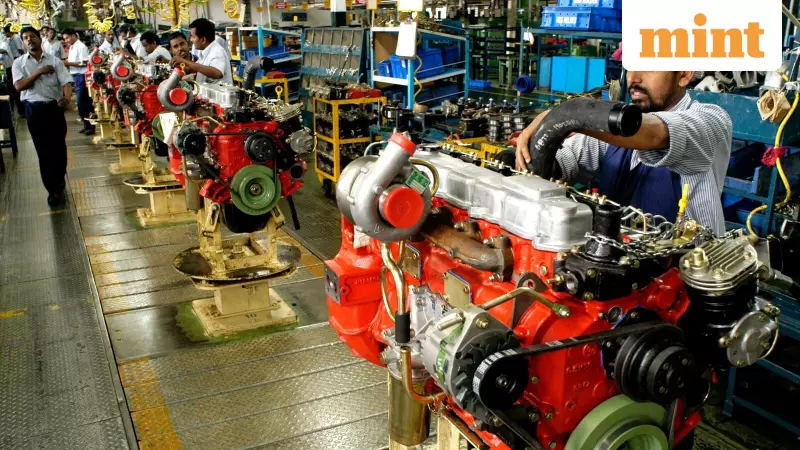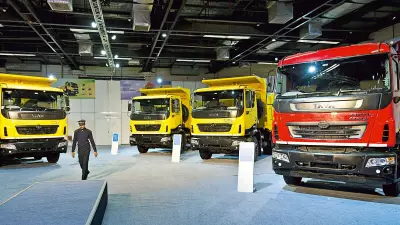
Ashok Leyland Ltd has delivered a remarkable performance in the second quarter of fiscal year 2026, surprising investors and analysts alike with better-than-expected results that propelled the stock to a new 52-week high. The commercial vehicle manufacturer's strong showing comes after a muted FY25 and slow start to FY26, marking a significant turnaround in investor sentiment.
Quarterly Performance Highlights
The company reported 9% year-on-year revenue growth to ₹9,590 crore for Q2FY26, beating market estimates. This impressive performance was driven by 8% volume growth and better realizations across product segments. Exports emerged as a standout performer, jumping 45% year-on-year and contributing nearly 10% of total volumes.
While the core domestic medium and heavy commercial vehicle segment showed modest growth of just 2%, light commercial vehicle volumes grew by 6%. More importantly, Ashok Leyland gained significant ground against competitors, with market share increasing by 50 basis points to 31% in MHCVs and 90 basis points to 13.9% in LCVs.
Margin Expansion and Diversification Success
The company's margin story continues to impress, with EBITDA margin improving from 11.6% in Q2FY25 to 12.1% in Q2FY26. This marks the 15th consecutive quarter of year-on-year margin expansion, supported by sustained cost optimization efforts and a favorable business mix.
A key transformation in Ashok Leyland's revenue composition has been the rapid growth of margin-accretive non-truck businesses. The company's spares, power solutions, and defense divisions now contribute 50% of total revenues, up significantly from 40% in FY22. This strategic diversification has provided stability and improved profitability.
The company's subsidiaries are beginning to make meaningful contributions, particularly Switch Mobility India, which focuses on electric buses. The subsidiary turned EBITDA and PAT positive in H1FY26 and is on track for free-cash-flow breakeven by FY27, adding ₹50 crore to the company's bottom line in Q2 alone.
Future Outlook and Potential Risks
Looking ahead, several factors bode well for Ashok Leyland's continued growth. The anticipated GST 2.0 reforms, continued government capital expenditure, healthy monsoon patterns, and rising replacement demand due to an ageing truck fleet all point toward sustained MHCV demand.
The company's capital expenditure strategy appears well-calibrated, with ₹660 crore already spent in H1FY26 and full-year guidance set at ₹800-1,000 crore. This positions Ashok Leyland ahead of the demand curve, supported by its net-debt-free balance sheet.
However, significant risks remain. The expansion of railway infrastructure, particularly the Western Dedicated Freight Corridor, could divert freight movement and impact MHCV demand. Additionally, concerns persist around the company's aggressive stance on upcoming e-bus tenders under the PM E-Drive scheme.
Analysts from Nuvama Institutional Equities have flagged concerns about the capital intensity of the Gross Cost Contract model for e-buses, charging infrastructure readiness, and supply chain challenges, especially for batteries. Under the GCC model, manufacturers retain asset ownership and receive per-kilometer payments from state transport agencies.
The stock has rewarded investors handsomely, rallying by 38% over the past year and outperforming the Nifty Auto Index's 20% return. This strong performance has pushed valuations to 14.5x EV/EBITDA based on Nuvama's FY27 estimates. While the Q2 surprise has put the stock in top gear, investors should remain cautious about potential roadblocks that could affect future performance.





